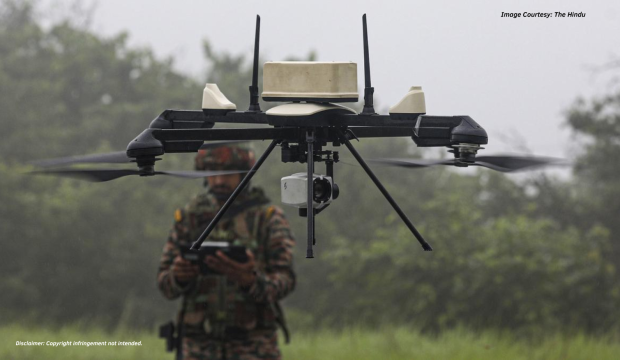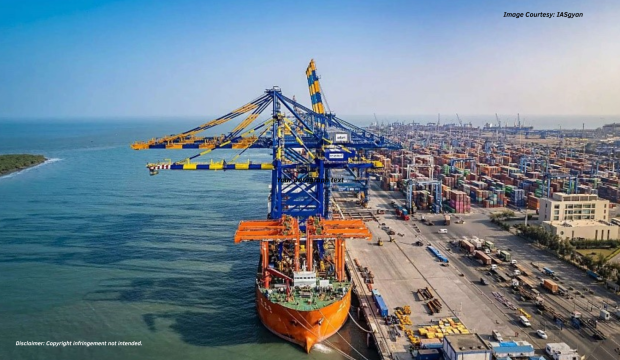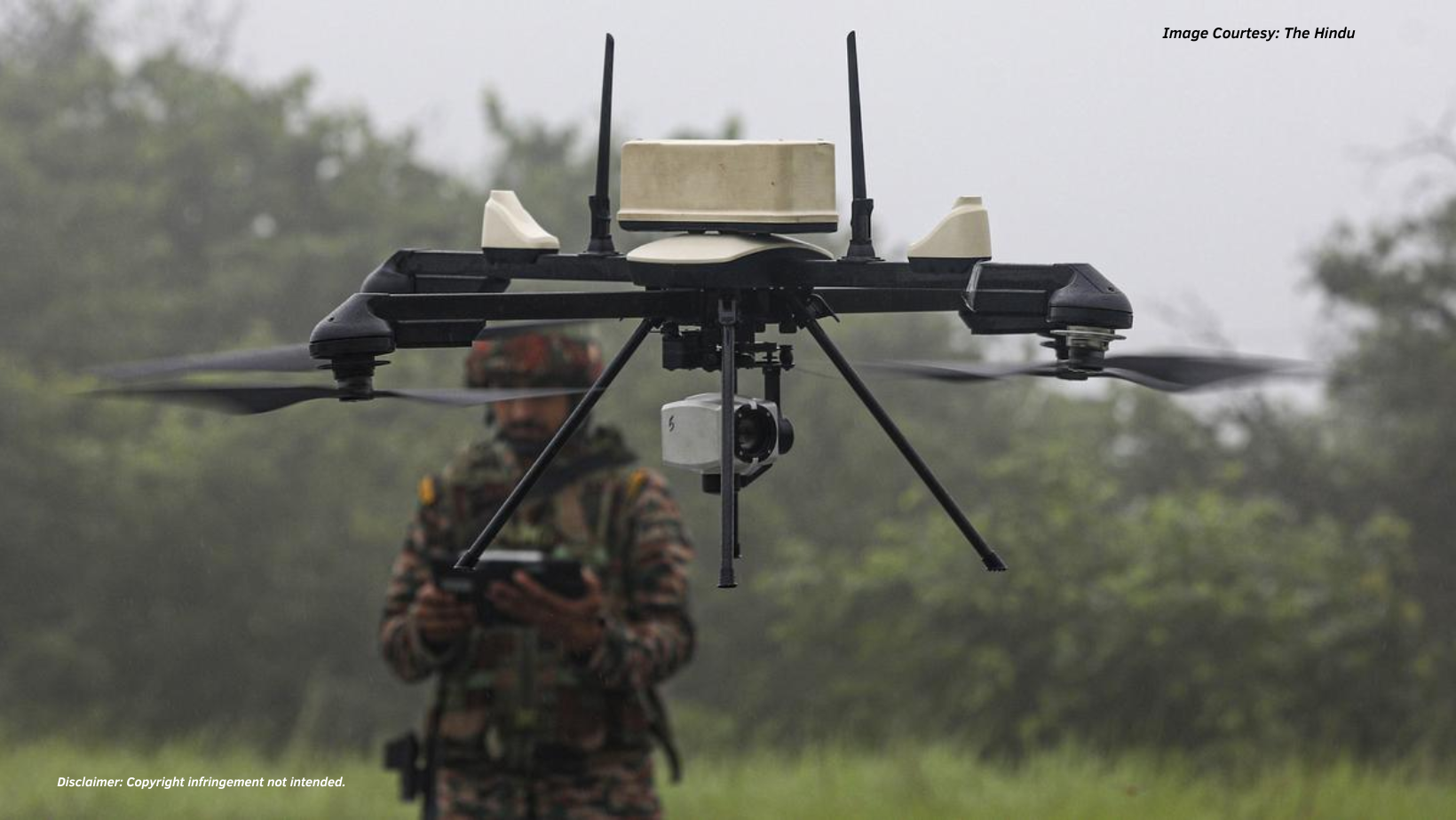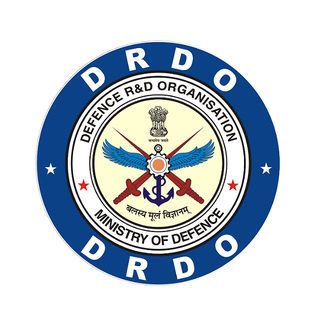Introduction
Climate change, at present, is not limited to a critical ecological discussion; it is now a major non-traditional security threat with immediate ramifications for territorial integrity and autonomy, natural resources, food security, and geostrategic approaches.1 In contrast to traditional challenges, climate change is fragmented, cross-regional, and slowly escalating; yet, its effects are significantly catastrophic and disruptive in nature.2 For New Delhi, whose maritime identity and economic stability are firmly connected to the Indian Ocean region (IOR), climate change is not merely an environmental challenge but a threat multiplier and catalyst of geopolitical destabilisation.3
The Bay of Bengal (BoB) highlights a climate-security dilemma. Considering one aspect, it has been a space of growth opportunities, including high-yield fishing grounds, critical maritime corridors, hydrocarbon reserves, and a pivotal gateway connecting South and Southeast Asia. 4 On the contrary, it ranks among the most climate-sensitive maritime zones in the world, experiencing a rapid temperature increase that exceeds the global average, resulting in more severe cyclones, accelerated coastline degradation, and a continuous rise in sea levels.5 The transitions are not only developmental concerns or ecological issues; they are high-impact events that can rewrite the boundaries, relocate communities and ignite fresh versions of competition in the BoB region.
What makes this strategic concern more significant is that maritime boundaries and Exclusive Economic Zones (EEZs), the legal framework of ocean governance, are grounded in climate-vulnerable landscapes that are presently exposed to threats.6 Islands might disappear, coastal fronts may erode landward, and alongside them, the legal geographical maritime baselines that define jurisdictional rights under UNCLOS. For New Delhi, this is not merely conceptual; its 2014 maritime boundary settlement with Bangladesh demonstrated how disputed maritime areas can impact the ability to utilise the critical resources.7 If sea-level rise continues to increase at a more rapid rate, such differences and disagreements may reappear in more complex patterns, challenging the equilibrium of India’s EEZ in the BoB.
Therefore, the challenge is not simply about climate change, however also regarding, compromising strategic stability. Global climate crisis is disrupting the very cartography of power in maritime space, posing challenging queries about how New Delhi can protect its resources, safeguard naval facilities, and maintain its regional influence in the BoB amid turbulent waters.
Academic/Theoretical Angle
The jurisprudential and conceptual framework for India’s maritime claims is embedded in the United Nations Convention on the Law of the Sea (UNCLOS), which establishes regulations for “the five maritime zones: Internal Waters, Territorial Sea, Contiguous Zone, Exclusive Economic Zone (EEZ), and High Seas”.8
Under “UNCLOS’s Part V (EXCLUSIVE ECONOMIC ZONE) – Article 56 (Rights, jurisdiction and duties of the coastal State in the exclusive economic zone), the coastal State has the”9,
“Sovereign rights for the purpose of exploring and exploiting, conserving and managing the natural resources, whether living or non-living, of the waters superjacent to the seabed and of the seabed and its subsoil, and about other activities for the economic exploitation and exploration of the zone, such as the production of energy from the water, currents and winds”.10
And “Article 57 (Breadth of the exclusive economic zone)” 11clearly specifies,
“The exclusive economic zone shall not extend beyond 200 nautical miles from the baselines from which the breadth of the territorial sea is measured.”12
Although climate change reveals inherent challenges within this conceptual architecture, the shifting versus fixed baseline debate has evolved into a crucial legal dispute: should baselines be shifting, indicating shrinking or encroaching coastlines, or maintained to uphold historical entitlements? UNCLOS was formulated in the period of 1980-90s, when climate-induced sea level rise and immersion were minute and insignificant, and it does not clearly address the perpetual or partial submergence of islands13. This opens the possibility of “areas of legal ambiguity”, where a submerging island could obstruct a nation’s sovereign maritime rights, placing EEZs at risk of legal disputes.
Also, UNCLOS Article 121 specifies the legal standing of islands with three pivotal clauses:
- “An island is a naturally formed area of land, surrounded by water, which is above water at high tide.”14
- “Islands, in principle, generate maritime zones just like continental land, territorial seas, contiguous zones, EEZs, and continental shelves.”15
- “Rocks which cannot sustain human habitation or economic life of their own shall have no exclusive economic zone or continental shelf.”16
The third clause, often overlooked, becomes the core notion of friction in a world reshaped by climate change. Amid elevation of sea levels, erosion-induced displacement, and coastal salinisation, which adversely affect the inhabitation and long-term economic sustainability of vulnerable islands, the risk is not only territorial submersion but also loss of legal recognition. An island that becomes less populous or a stable financial structure might be recategorised as a “rock,” removing it from EEZ and continental shelf claims.17
Corresponding cases highlight these challenges strikingly. The Maldives have been facing the most significant impacts of global warming and increasing sea temperature with little assistance from international actors.18 The nation is responsible for only 0.003% of global emissions, yet it ranks among the leading countries to witness the existential threats of global warming.19 The Maldives, being the lowest-lying nation in the world, comprises 1,200 islands with an average elevation of just 1.5 metres above sea level, which creates spatial disadvantage at the forefront of climate challenges. 20 The Government of the Maldives has already advocated and appealed to the global community to acknowledge fixed baselines to uphold maritime jurisdictions.21 Also, at the same time, Parties to the Nauru Agreement, eight Pacific nations have come forward to protect 200 nautical mile EEZs, before territorial loss as a result of climate change.22 These island nations are advocating for maritime zones to be maintained under sovereign jurisdiction, to protect their resources (which are predominantly declining because of fishing grounds) and communities (which are being affected by migration due to climate change), even if the islands are submerged.23, emphasising the conflicts between geospatial and legal aspects.
Certain cases have already shown the attempts made by nations, particularly Small Island Developing States (SIDS), to uphold their EEZs from the risks posed by environmental changes and disruptions.24 Their actions often merge diplomatic initiatives, legal proceedings and regional sustainability approaches. In 2024, the Alliance of Small Island States (AOSIS) presented a ‘Declaration on Sea Level Rise and Statehood’ at the United Nations High-Level Meeting on the Threats of Sea Level Rise, emphasising that rising coastal waters do not compromise sovereign status, national autonomy, and jurisdictional maritime areas. 25 The formal announcement expands upon previous AOSIS pledges that EEZs continue to be immutable regardless of climatic shifts. With the help of the International legal framework and consultative rulings from the International Tribunal for the Law of the Sea and the International Court of Justice, AOSIS is protecting Small Island Developing States’ maritime rights in light of rising sea levels.26 27 For many island nations, their EEZs are approximately 28 times the country’s terrestrial land area; therefore, it becomes essential for the nations to protect their maritime sovereignty, which is significant for rich fishing grounds and to preserve their national identity.28
For New Delhi, these cases and clauses provide insightful lessons. The BoB region is severely threatened by climate change, facing higher sea levels, recurrent cyclones, and coastal erosion, which endanger maritime order in the IOR.29 India’s Andaman & Nicobar Islands, which constitute a crucial component of its coastal baselines, experience persistent erosion and the effects of storm surges.30 This creates a risk-prone position in terms of strategic weakness for the nation. Although these islands will remain in existence, intensified storms, environmental vulnerability, and climate-induced displacement might lead to legal issues from regional and extra-regional powers. In contrast to continental land, which is comparatively steady, island-dependent EEZs are subject to evolving legal interpretations under Article 121(3).
Without forward-looking legal and diplomatic measures, India may suffer a segmental loss of EEZ claims and control over key resources, such as fish stocks and offshore hydrocarbons. Crucially, this convergence of climate research and international law highlights entrenched structural unfairness in oceanic governance, benefiting nations with stable landscapes while disadvantaging those with climate-risk coastal areas, a concern New Delhi must manage both analytically and strategically.
Practical and Strategic Implications of Sea-Level Rise for India
Sea-level rise in the BoB is more than just an ecological risk; it reveals profound economic, legal and geostrategic ramifications for New Delhi. The erosion or inundation of coastal and island regions could heighten the risks for India regarding claims to its EEZ, challenging its maritime sovereignty at a time when struggles over resource geopolitics and strategic power contests are increasing in the region.
• Legal Vulnerabilities in the EEZ
• Risks to Maritime Resources
The BoB possesses significant economic prospects for New Delhi, supporting the financial security of maritime communities and playing a significant role in the nation’s food self-sufficiency. 35 Its fishing grounds provide economic stability to the fishing communities across eastern India; catches from the entire Indian Ocean, with an approximate total of 3.47 million tonnes in 2024, decreased by 2% due to the impact of severe cyclones and warming seas. 36This highlights the vulnerabilities that the region’s marine resources are facing. Such climate-related impacts undermine the accessibility of fish and the financial stability of coastal populations that depend on them. Beyond fisheries, the BoB region contains large hydrocarbon reserves, particularly in the Krishna-Godavari Basin, where deepwater fields like KG-DWN-98/2 are expected to produce up to 45,000 barrels of oil per day upon reaching full capacity.37 Elevated Ocean levels, more severe cyclones, and extreme storm tides could destroy offshore operational assets, exposing dangers to India’s energy security.
Additionally, BoB offers substantial opportunities for seabed minerals and growth in renewable energy. New Delhi has begun research on deep-sea mining tests in the Andaman Sea to extract value from polymetallic nodules, 38While also initiating projects on mapping offshore wind capacity across the southeastern tip of the BoB region to reduce CO2 emissions over a period of twenty-five years.39 However, climate change presents both jurisdictional and physical ambiguities: the depletion or modification of baselines may put these resources at a vulnerable State to contention under UNCLOS, mainly as India aims to increase its EEZ from 200 to 350 nautical miles. Safeguarding these resources, thus, necessitates a synthesis of sustainable infrastructure, rigorous scientific observation and forward-looking legal initiatives to protect New Delhi’s economic and security imperatives in the BoB region.
India’s Strategic Stakes in the Bay of Bengal: A Critical Assessment
• Security and Naval Considerations
• Geopolitical Vulnerabilities
• Interplay of Law, Climate, and Geopolitics
The BoB demonstrates how jurisdictional uncertainties, ecological sensitivity, and geopolitical rivalries intersect. In one respect, international law under UNCLOS doesn’t explicitly mention the durability of maritime sovereignty when coastal areas are submerged. On the other hand, climate research anticipates that the BoB will be one of the areas most severely affected by rising sea levels, increased flooding vulnerability, and intense weather events. For New Delhi, this two-fold exposure means that the protection of its EEZ and the reliability of its maritime position are concurrently at risk. The risk extends beyond territorial loss to also include a diminution of strategic position in a zone where non-regional actors are keen to expand their presence.
Policy Recommendations: Strategic Priorities for India
• Enhancing Climate-Conscious Maritime Domain Awareness (MDA)
Considering the evolving and climate-vulnerable ecosystem of the BoB, India should strengthen its maritime domain awareness (MDA) by embedding climate-sensitive intelligence. Space-based monitoring, oceanographic surveys, and dynamic hydrological surveys should be employed to continually monitor coastal erosion zones, riverine deltas, and marine habitats. These capacities not only predict the physical ramifications of environmental change but also give credible proof for securing India’s EEZ rights under UNCLOS. With approximately ninety-five per cent of India’s trade passing through the Indian Ocean, strong MDA is crucial for economic stability, strategic operations planning and early detection of climatic or geostrategic upheavals.
• Strengthening Infrastructure and Building Resilience
India’s strategic outposts, especially in the Andaman and Nicobar Islands, face extreme climate threats, including tropical storms, severe weather changes, and a continuous increase in sea levels. Strengthening naval and dual-role facilities through climate-adaptive development, advanced drainage infrastructure, and ecological rehabilitation, which includes the preservation of mangroves and coral reefs, can help mitigate these risks. Infrastructure fortification ensures that India’s strategic bases continue to function during severe circumstances and minimises the diversion of maritime security resources to relief operations, keeping itself prepared amidst expanding regional strategic power contestation.
• Safeguarding Maritime Resources and Normative-Legal Engagement
The BoB region supports New Delhi’s economic and geostrategic priorities through its rich maritime resources, including fisheries, hydrocarbons, and deep-sea mineral resources. Therefore, it becomes significant for India to must take an active role in regional dialogue frameworks, such as, IORA, BIMSTEC and IONS, to support resilient blue governance and set the legal standards for baselines asserted by maritime nations to protect both its legal claims and resources. Establishing norms to protect EEZs and maritime rights, as well as mitigating the repercussions of increasing sea-levels, will support in any foreseeing potential from neighbouring countries or external forces. Thus, developing a legal standard of fixed baselines in national legislation, along with effective monitoring, is vital to safeguard India’s accessibility and avoid conflicts, thereby protecting the security of its resources.
• Incorporating Climate Change into Strategic Formulation
Climate change should be incorporated into India’s maritime doctrine. Undertaking climate resilience evaluations for naval operations, integrating HADR missions into practical implementation, and formulating future resource conflict in critical domains like deep-sea mining or offshore renewable energy are of vital necessity. Forward-looking inclusion of climate risks in long-term planning assures that dangers from climate change do not convert into operational or strategic weaknesses.
Conclusion
The BoB exists at the intersection of climate vulnerabilities, fisheries, and rich oceanic resources, as well as geostrategic priorities for New Delhi. Rising sea levels, tropical cyclones, and coastal erosion present threats to significant infrastructure, sovereignty claims, and naval missions. While UNCLOS serves as the cornerstone for maritime claims, it offers minimal guidance on climate- driven changes, advancing the development of climate-resilient strategies especially important. The Bay of Bengal’s geographical and geostrategic significance, from marine resources to projecting naval influence, makes it a region where environmental, legal and security challenges overlap. To safeguard its priorities, India must adopt a holistic approach that integrates climate-resilient MDA, well-structured infrastructure, jurisdictionally established baselines, and Joint regional efforts. India has the potential to transform possible threats into a space by taking regional command, developing norms for adaptive oceanic governance while safeguarding its EEZ and geostrategic advantage in the Bay of Bengal and the broader Indo-Pacific region.
DISCLAIMER
The paper is author’s individual scholastic articulation and does not necessarily reflect the views of CENJOWS. The author certifies that the article is original in content, unpublished and it has not been submitted for publication/ web upload elsewhere and that the facts and figures quoted are duly referenced, as needed and are believed to be correct.
References
United Nations. “Climate Change ‘Biggest Threat Modern Humans Have Ever Faced’, World-Renowned Naturalist Tells Security Council, Calls for Greater Global Cooperation.” Press release, February 23, 2021.
UCAR, Center for Science Education. “Climate Change: Regional Impacts.” UCAR, n.d.
Acharya, Monalisha. “Climate Change and Maritime Security: India’s Growing Concern.” IMPRI Impact and Policy Research Institute, July 18, 2025.
Ranjan, Amit, and Chulanee Attanayake. “The Bay of Bengal in the Evolving Indo-Pacific Debate.” Australian Journal of Maritime & Ocean Affairs 16, no. 3 (August 23, 2024): 285–91.
Rajalakshmi, P.R., and Hema Achyuthan. “Climate Change as Observed in the Bay of Bengal.” Journal of Climate Change 7, no. 3 (September 2, 2021): 69–82.
Westerveld, Levi. “The Potential Impacts of Climate Change on Exclusive Economic Zones Boundaries.”, University of Bergen, n.d.
Hukil, Sonia. “India-Bangladesh: Can the Maritime Boundary Resolution Rebuild Faith?” Institute of Peace and Conflict Studies, July 24, 2014.
Parliament. “THE TERRITORIAL WATERS, CONTINENTAL SHELF, EXCLUSIVE ECONOMIC ZONE AND OTHER MARITIME ZONES ACT, 1976.” India Code, August 25, 1976.
United Nations Convention on the Law of the Sea. “PART V EXCLUSIVE ECONOMIC ZONE.” United Nations, n.d.
Ibid
Ibid
Ibid
Oral, Nilufer. “UNCLOS and Sea Level Rise.” Marine Policy 149 (January 13, 2023): 105454.
United Nations Convention on the Law of the Sea. “Article 121-Regime of Islands.” UNITED NATIONS, n.d.
Ibid
Ibid
Pichel, Christine. “The Unfortunate Wording of Article 121(3) of UNCLOS and Its Interpretation in the 2016 South China Sea Arbitration Award.” Asia-Pacific Journal of Ocean Law and Policy 7 (2022): 53–90.
Muizzu, Mohamed. “The Maldives Faces Existential Threat from a Climate Crisis It Did Little to Create. We Need the World’s Help Now.” The Guardian, May 25, 2024.
Ibid
Kapoor, Ritika V. “CLIMATE CHANGE VULNERABILITIES OF THE MALDIVES: IMPLICATIONS FOR INDIA.” National Maritime Foundation, April 3, 2020
Shihab, Hassan Hussain Shihab. “Statement by Hassan Hussain Shihab, Counsellor, Permanent Mission of Maldives to the United Nations at the Sixth Committee On Agenda Item 80: Report of the International Law Commission on the Work of Its Seventy-Second Session.” New York, United States of America, November 2020.
Jorani, Leanne. “Pacific Countries Move to Protect EEZ Waters in Face of Climate Change.” TunaPacific, December 10, 2018.
United Nations, “Climate Change-Induced Sea-Level Rise Direct Threat to Millions around World, Secretary-General Tells Security Council,” Press release, (February 14, 2023).
Alliance of Small Island States. “Small Island States Leaders Affirm Statehood and Sovereignty Are Protected against Sea Level Rise – AOSIS.” Press release. Alliance of Small Island States, September 24, 2024.
Ibid
Union of Concerned Scientists. “International Tribunal for the Law of the Sea Issues Historic Guidance on Climate Change in International Law,” May 21, 2024.
Alliance of Small Island States. “AOSIS Press Statement on the Upcoming ICJ Advisory Opinion on Climate Change.” Press release, June 22, 2025.
Office of the High Representative for the Least Developed Countries, Landlocked Developing Countries and Small Island Developing States. “About Small Island Developing States.” United Nations, n.d.
Shidore, Sarang. “Climate Security and Instability in the Bay of Bengal Region.” The Council on Foreign Relations, April 2023.
Joshi, Yogesh, Nishant Rajeev, Hoang Thi Ha, Sinderpal Singh, and Ian J Storey. “Regional Security Architecture in the Andaman Sea: Perspectives from Southeast Asia, India and Beyond.” Institute of South Asian Studies. Institute of South Asian Studies, 2022.
Maritime Tales & Cutting-Edge Sails. “Will Drones Redefine India’s Defence of Its Seas?” May 29, 2025.
Pti. “Expect UN Nod for India’s Extended EEZ Claim: Kumar.” The Economic Times, June 11, 2011
Sunderarajan, P. “India Hopes to Double Its EEZ.” The Hindu, June 12, 2011.
United Nations Convention on the Law of the Sea, “REGIME OF ISLANDS,” United Nations, n.d.
Singh, Abhijit. “Maritime Security in the Bay of Bengal: Obstacles and Opportunities.” OBSERVER RESEARCH FOUNDATION, May 14, 2024.
Special Service and Features, Government of India. “India’s Marine Fish Landings Drop 2% in 2024: CMFRI.” Press release, August 4, 2025.
The Hindu Bureau. “ONGC Begins ‘First Oil Production’ from Deepwater Block in Krishna-Godavari Basin.” The Hindu, January 8, 2024.
Shankar, Priyanka. “India’s Marks Advance in Deep Sea Mining with Andaman Sea Expedition.” Scroll in, November 30, 2024.
The Maritime Executive. “India Approves Plan for First Two Offshore Wind Farms,” June 20, 2024
Ranjan, Amit, and Chulanee Attanayake. “The Bay of Bengal in the Evolving Indo-Pacific Debate.” Australian Journal of Maritime & Ocean Affairs 16, no. 3 (August 23, 2024): 285–91.
Ministry of Ports, Shipping and Waterways. “Sagarmanthan 2024: India’s Maritime Vision.” Press release, November 19, 2024.
Baruah, Darshana M. “The Andaman and Nicobar Islands: India’s Eastern Anchor in a Changing Indo-Pacific.” War on the Rocks, March 21, 2018.
Monalisha Acharya, “Climate Change and Maritime Security: India’s Growing Concern – IMPRI Impact and Policy Research Institute,” IMPRI INDIA, July 18, 2025
Reuters. “Bangladesh Wins Sea Border Dispute with India.” Al Jazeera, July 9, 2014.
Gilani, Iftikhar. “India’s Border Dispute with Neighbours.” Anadolu Agency, May 31, 2020.

Bidisha Deka
is a Research Intern at CENJOWS














































